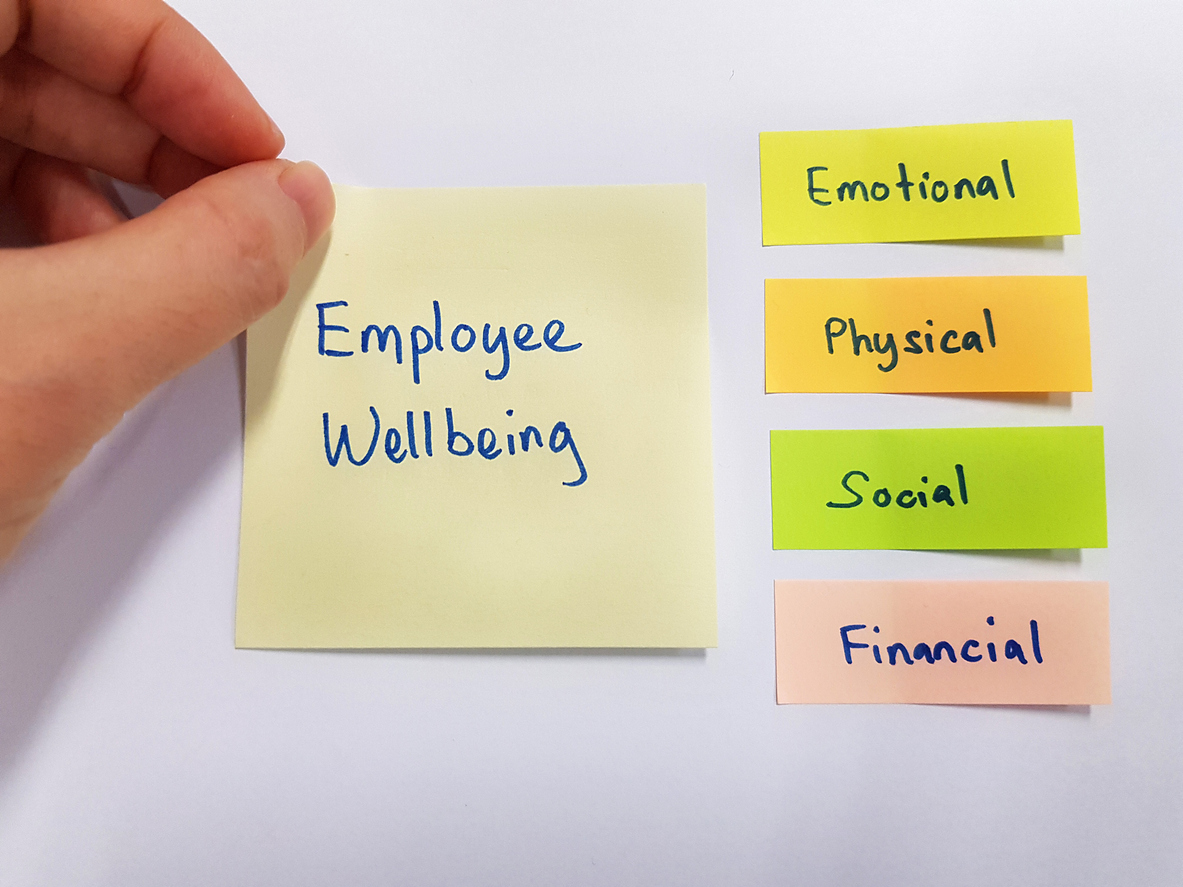Jonathan Gelfand, employee wellness expert, speaks on the future of workplace wellness
The new senior vice president for solutions consulting at meQuilibrium believes in an employee-centric approach to well-being.

At the core of his career, Jonathan Gelfand has focused on helping people find resilience.
With an MBA from Rutgers Business School and a master’s degree in public health from Rutgers Wood Johnson Medical School, Gelfand thought he would go into long-term care administration. Instead, he’s spent his career helping others navigate healthcare and building expertise around holistic well-being in a corporate setting.
“The running theme in all of the work I’ve done is resilience,” Gelfand says. “I’m also trying to help them identify the meaning and value in their own personal goals around health and well-being.”

Gelfand recently took the senior vice president position for solutions consulting at Boston-based meQuilibrium, a digital workforce resilience platform. With 23 years in the healthcare industry — including a stint supporting 250,000 employees as IBM’s global wellbeing and health promotion manager — Gelfand has seen wellness trends go from merely physical health to a holistic approach.
“I didn’t appreciate the distinction between wellness and well-being initially and I learned in interacting with colleagues from around the world that there is a distinction,” says Gelfand. “Well-being is seen as the connection and intersection of the mind, body, emotional, social, financial and purposeful sort of living.”
Gelfand believes a benefit program should center around an organization’s values. Examining policies, looking at available training for leaders and recognizing the physical and social environment are all needed to determine values.
“I think when we talk about organizational health, and we talk about a culture of health and well-being, all those things are important, whether it be DE&I initiatives, whether it be leadership training, or benefits and HR,” says Gelfand.
Gelfand saw this play out at IBM. In a 2018 CEO roundtable, IBM’s CEO Ginni Rometty brought up mental health. Mental health is a priority for Gelfand, and so he spoke up.
“IBM has a history of doing great things for the workforce, but I took the opportunity to say ‘we’re not doing enough,’” says Gelfand. “I believe it’s important to take a stand and articulate what you stand for. I know the power of introspection and ability to improve. Mental health is a priority.”
So Gelfand collaborated with IBM’s chief medical officer to create IBM’s first-ever point of view (POV) on mental health and well-being. Gelfand identified what IBM believed about mental health, reviewed its policies and looked at gaps in programs. Ultimately, it rolled out or expanded benefits to better suit the needs of its employees, including round-the-clock access to mental health support and an expanded employee assistance program (EAP).
“It empowered us to move forward and better prepared us for our response to the pandemic,” says Gelfand. “Having that POV out there allowed us to move forward and remedy those needs quickly.”
There is no cookie-cutter well-being program an organization can purchase from a vendor, notes Gelfand. Instead, it takes developing a culture of health and well-being. And that begins when the wellness program leaves the HR department.
Gelfand says far too often employers have siloed departments. The employee experience is negatively impacted when communication around well-being is stuck where they can’t access the information. A unified voice around well-being is the better approach.
“HR can bring programs forward within organizations, but well-being belongs to everybody,” says Gelfand. “When those initiatives are able to get out of HR and have grassroots or senior champions, they’re going to be much more impactful and sustainable.”
Gelfand thinks employee surveys, assessments and other sources of feedback are critical to understanding employee experience and needs. This foundation of knowledge helps design better initiatives.
At IBM, design-thinking workshops are an often-used tool. Gelfand explains it allows employees to contemplate different personas, needs, requirements, expectations of individuals and their goals.
“It allows you to have an employee-centric approach that meets people where they are,” adds Gelfand.
Leadership buy-in also is key to successful wellness programs. Gelfand was the health and wellness director at the Hess Corporation from 2007 to 2014, where the CFO was the executive sponsor of wellness. Gelfand believes having key performance indicators (KPIs) around wellness is necessary to understand the impact of a well-being investment.
“We knew if we could convince the CFO and really engage the CFO, they would be able to help us work within the business,” says Gelfand. “Often wellness programs are a “nice to have.” We’ve seen during the pandemic that the investment needs to have a connection to business results. Research demonstrates a healthy workforce beats marketplace expectations, but you have to be able to demonstrate that value and impact of your investment.”
As leadership helps create a culture of wellness, it removes the stigma around issues like mental health and burnout. It also helps support managers who need to lead with empathy and recognize a need in their team before it becomes a crisis, creating a culture of psychological safety.
Gelfand believes the pandemic has been a wake-up call for organizations that were slow to prioritize organizational wellness. Financial well-being, mental health and physical health are all essential.
“I believe organizations that focus on those will have more sustainable well-being initiatives and a workforce that thrives in the face of uncertainty.”
COMMENT
Ragan.com Daily Headlines
RECOMMENDED READING
Tags: employee benefits, holistic wellness, Jonathan Gelfand, meQuilibrium, well-being

